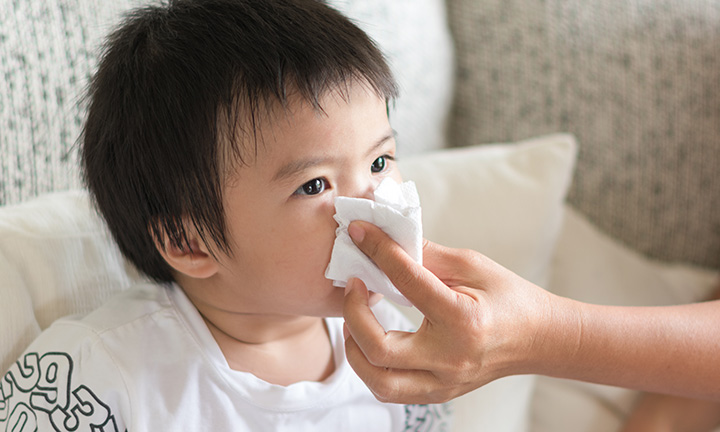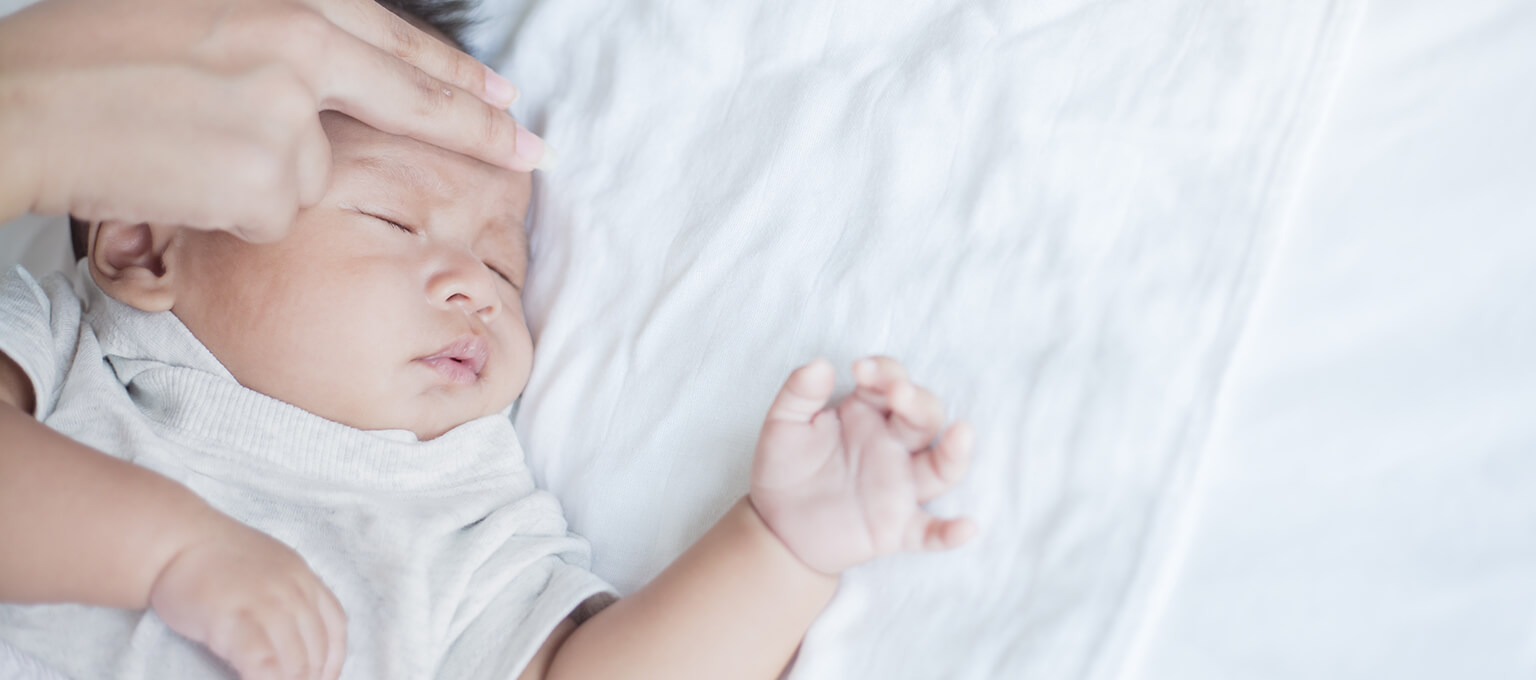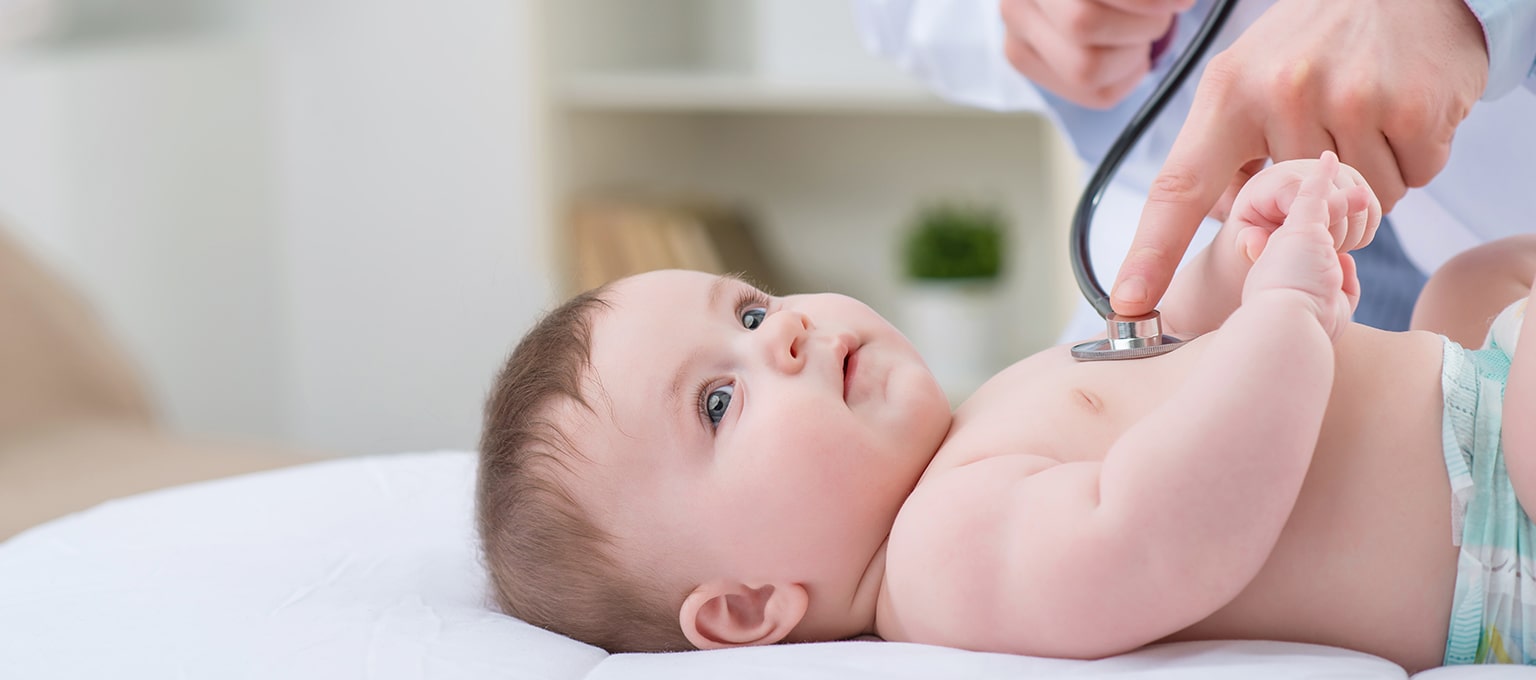
What Is Slapped Cheek Syndrome?
Rosy cheeks may be cute and adorable sometimes, but at other times they may be a sign of illness. Slapped cheek syndrome, also known as fifth disease, is a name for the parvovirus B19 infection, which shows up on your child’s face as a rash that can look like rosy cheeks. Learn more about slapped cheek syndrome in babies and toddlers, including the signs and symptoms, how it can be prevented and when to see your child’s GP.
What Is Slapped Cheek Syndrome?
Slapped cheek syndrome (also known as fifth disease), is a common childhood illness caused by the parvovirus B19 virus. It’s infectious, meaning it can be spread from person to person.
In case you were wondering, human parvovirus (B19) is not the same thing as the parvovirus which can infect some pets, especially dogs. Slapped cheek syndrome can’t be caught from animals, and it can’t be given to your pet.
Slapped cheek syndrome is most common in babies, toddlers and older children. Adults are less likely to get it, but if they do, the symptoms may differ and can be more serious.
Thankfully, if your child has been infected with parvovirus B19 once, they will almost certainly be immune to it for life.
How Long Does Slapped Cheek Syndrome Last?
It usually takes up to three weeks for slapped cheek syndrome to clear up after the first cold-like symptoms (if any) appear.
The rashes on the cheeks usually clear up within two weeks, and the lighter-coloured body rash also typically takes a couple of weeks to disappear.
Sometimes, however, the body rash may come and go for up to a month. In this case, it can be triggered by heat, anxiety or physical exertion.
Slapped Cheek Syndrome Incubation Period
Once infected, it can take around 4 to 20 days for the first rash symptoms of slapped cheek syndrome to appear.
Is Slapped Cheek Syndrome Contagious and For How Long?
As mentioned above, slapped cheek syndrome is infectious for about 4 to 20 days before the rash sets in – it’s during this period that your child might experience the cold-like symptoms as well.
When the rash appears, it’s a sign that your child is no longer infectious, so there’s no need to keep them home from school or childcare once that happens.
Do let the school know that your child has slapped cheek syndrome though.
If your child has slapped cheek syndrome, it’s especially important to keep them away from pregnant people, as it can cause problems affecting the foetus if a pregnant person gets infected with the virus during pregnancy.
How to Diagnose Slapped Cheek Syndrome
Slapped cheek syndrome is commonly diagnosed by the signature rash that appears on your little one’s cheeks, which may be less obvious on darker skin tones. It may also be accompanied by the symptoms listed in the section below, including a temperature and sore throat.
If you’re unsure whether the rash is caused by slapped cheek syndrome or something else, check out our article on common rashes in babies or consult your GP.
What Causes Slapped Cheek Syndrome?
Like many other viral illnesses, the parvovirus B19 virus that causes slapped cheek syndrome is spread through the respiratory secretions (saliva, spit and mucus) of infected individuals.
This means, for example, that it can be passed from an infected person to your child via the respiratory droplets in coughs or sneezes, or if your child comes into contact with a surface or object that has been contaminated.
Can Slapped Cheek Syndrome Be Prevented?
There is no vaccine or other treatment that protects against the parvovirus B19 virus.
It’s also impossible to completely avoid people who have the disease, because a person with slapped cheek syndrome may be infectious for a week or more before the rash appears and they may not realise they are contagious.
To make spotting people who have the disease even harder, some people who have it show no slapped cheek symptoms at all during the infectious stage.
Still, there are a few things that you and your family can do to lessen the chance of anyone in your household getting the infection:
Symptoms of Slapped Cheek Syndrome
As its name suggests, the main symptom of slapped cheek syndrome in babies and toddlers is typically a bright red rash on both of your child’s cheeks. This rash may appear darker or harder to notice in children with darker skin tones.
A few days after the rash shows up on the cheeks, a rash of raised spots, which can be itchy, may also appear on your child’s body. This may also be harder to see on darker skin tones.
However, these rashes are not usually the first symptom your child will experience. In most cases, a child with slapped cheek syndrome will have cold-like symptoms for a few days before the rashes appear.
Early symptoms of slapped cheek syndrome can include:
Slapped Cheek Syndrome or Roseola
Both slapped cheek syndrome and roseola are common viral infections in children, but they have distinct characteristics that may help differentiate them.
Slapped cheek syndrome is characterized by the distinctive ‘slapped cheek’ rash that starts on the face before spreading to the body with a lace-like pattern. On the other hand, roseola typically starts with a sudden high fever, followed by a widespread rash that begins on the chest, tummy, and back before spreading to the face. The roseola rash may consist of many small, flat pink spots or patches, which may be harder to see on darker skin tones.
If you’re unsure whether your little one has slapped cheek syndrome, roseola or something else, contact your GP for a diagnosis.
Slapped Cheek Syndrome Symptoms in Adults
Can adults get slapped cheek syndrome? Although grown-ups are less likely than children to become infected with the parvovirus B19 virus that causes slapped cheek syndrome, the symptoms can be different (and sometimes more serious) than in babies and toddlers.
For example, adults don’t always get the ‘slapped cheek’ rash. It’s more common, on the other hand, for adults to experience stiff or painful joints, which can last up to several weeks after the other symptoms have cleared up. Like children, adults can also experience flu-like symptoms such as fever, a runny nose, a sore throat, and headaches.
If your child has slapped cheek syndrome, and you (or another adult in your home) haven’t had it before, it may be worth keeping an eye out for flu-like symptoms and joint pain in case you catch it from your child.
Slapped Cheek Syndrome Treatment
Slapped cheek syndrome usually clears up by itself without any special treatment, but there are some ways you can help ease the symptoms and make your little one more comfortable in the meantime:
When Should You Contact Your Child’s GP?
It’s not usually necessary to see a GP for a slapped cheek syndrome rash. However, do check with your GP or health visitor if you have any concerns, or if you’re unsure whether your child’s rash is caused by slapped cheek syndrome or something else.
To be on the safe side, or if you’re worried at all, speak to your GP if your baby or toddler has a fever.
If you’re pregnant...
...and you think you might have been in contact with someone who has slapped cheek syndrome, it’s important to let your GP know immediately.
Your GP will give you a blood test to determine whether you:
If you don’t have the disease but aren’t immune, you may be asked to go back for another blood test one month later and avoid contact with other pregnant people until then, as a precaution against further spreading the virus.
If you are infected, then in some cases – especially between 4 and 20 weeks pregnant – there’s a very small chance that the parvovirus B19 could be passed on to the foetus; or (in rare cases) that you could miscarry.
If you do test positive for parvovirus B19, try not to panic. You’ll be monitored very closely in order to diagnose – and effectively treat – any problems, such as anaemia, that may develop in you or your foetus.
Having parvovirus B19 infection when you’re pregnant is not believed to cause any birth defects in your baby.
The Bottom Line
Slapped cheek syndrome may leave your little one feeling under the weather, but with plenty of TLC and some rest, it shouldn’t be long before they’re back to their old self again.
If you haven’t already, download the Pampers Club app to collect points and earn rewards on your nappy purchases.
How we wrote this article The information in this article is based on the expert advice found in trusted medical and government sources, such as the National Health Service (NHS). You can find a full list of sources used for this article below. The content on this page should not replace professional medical advice. Always consult medical professionals for full diagnosis and treatment.
Read more about Baby
Related Articles
Join Pampers Club and get:













